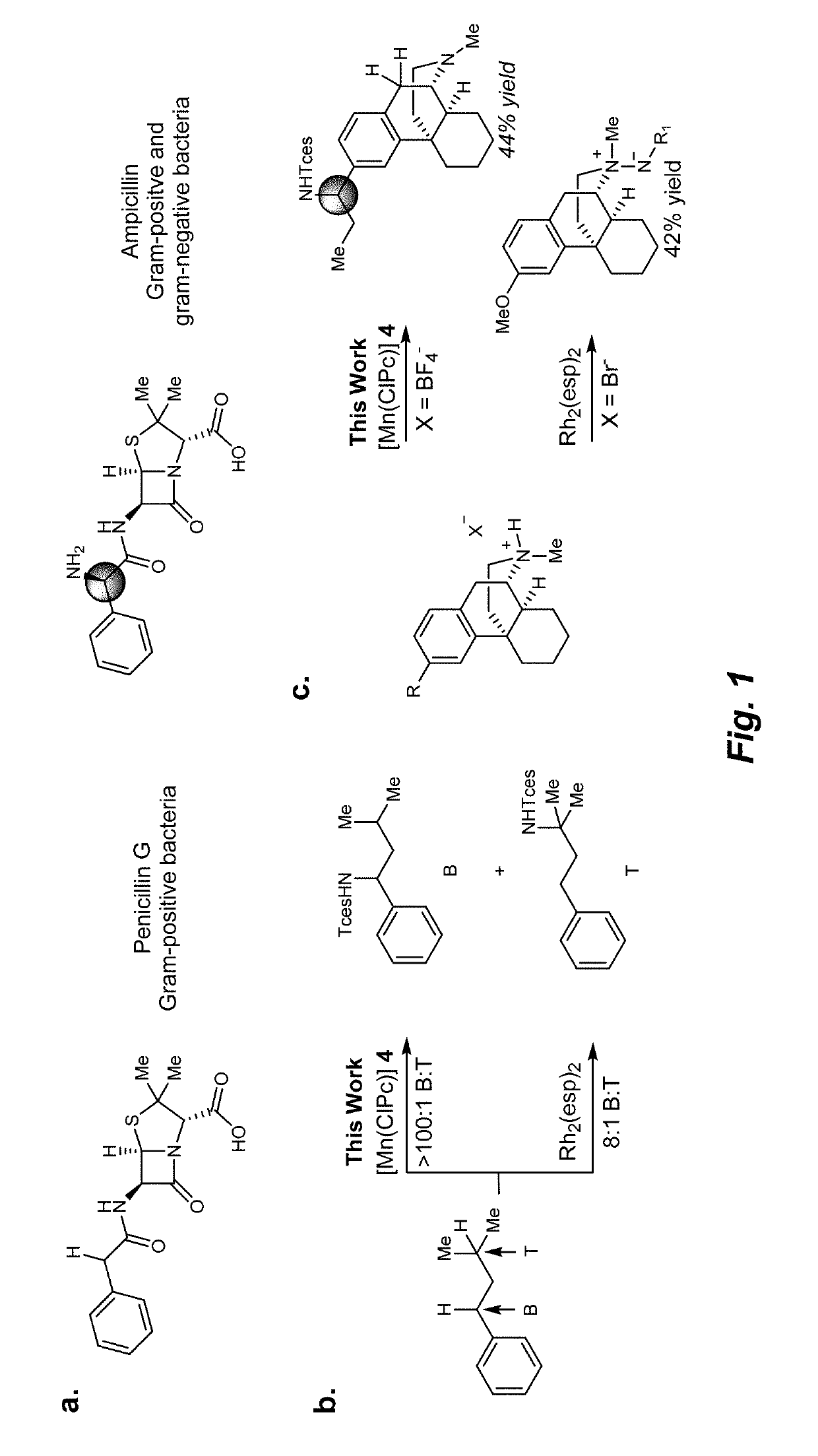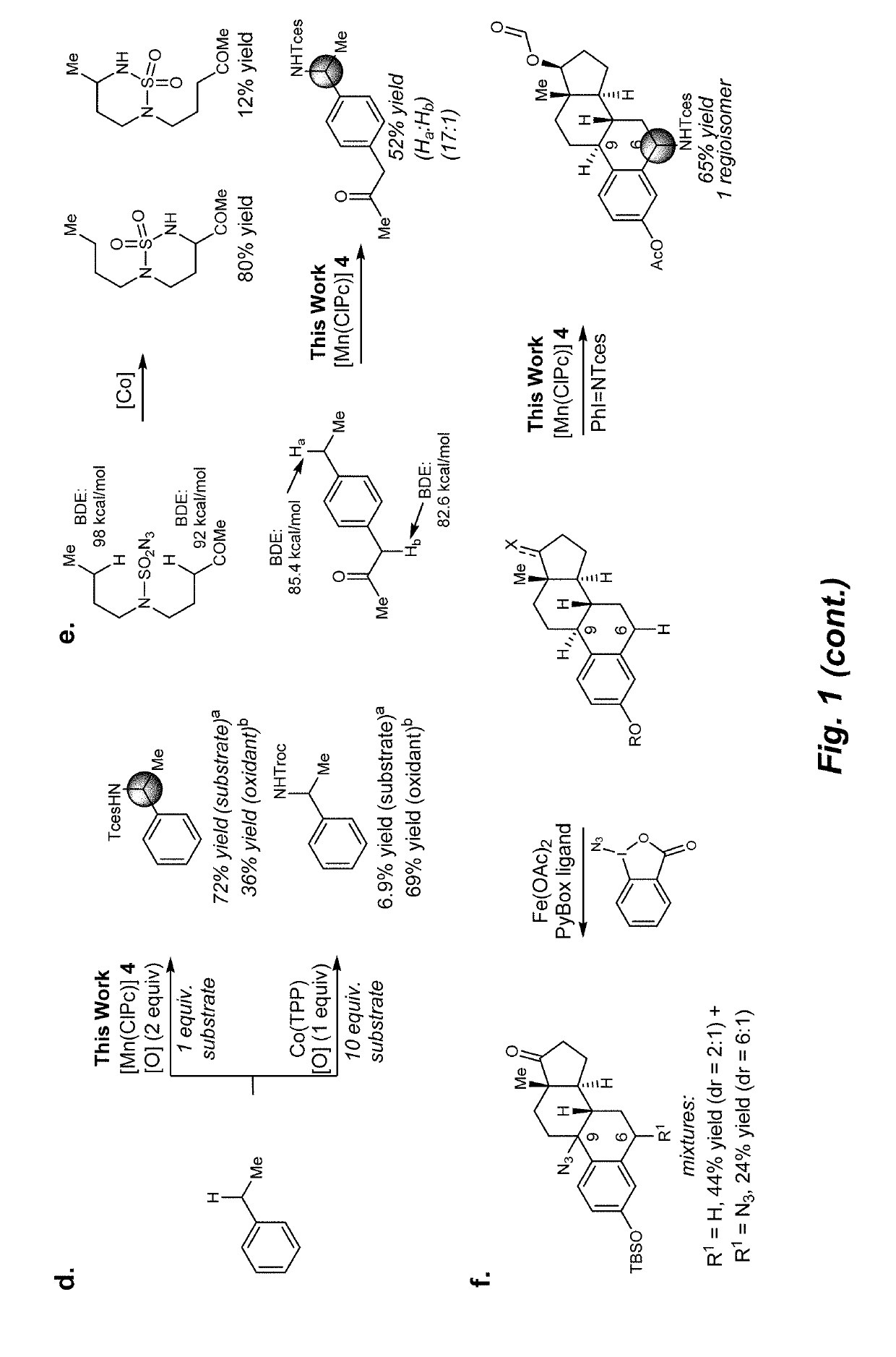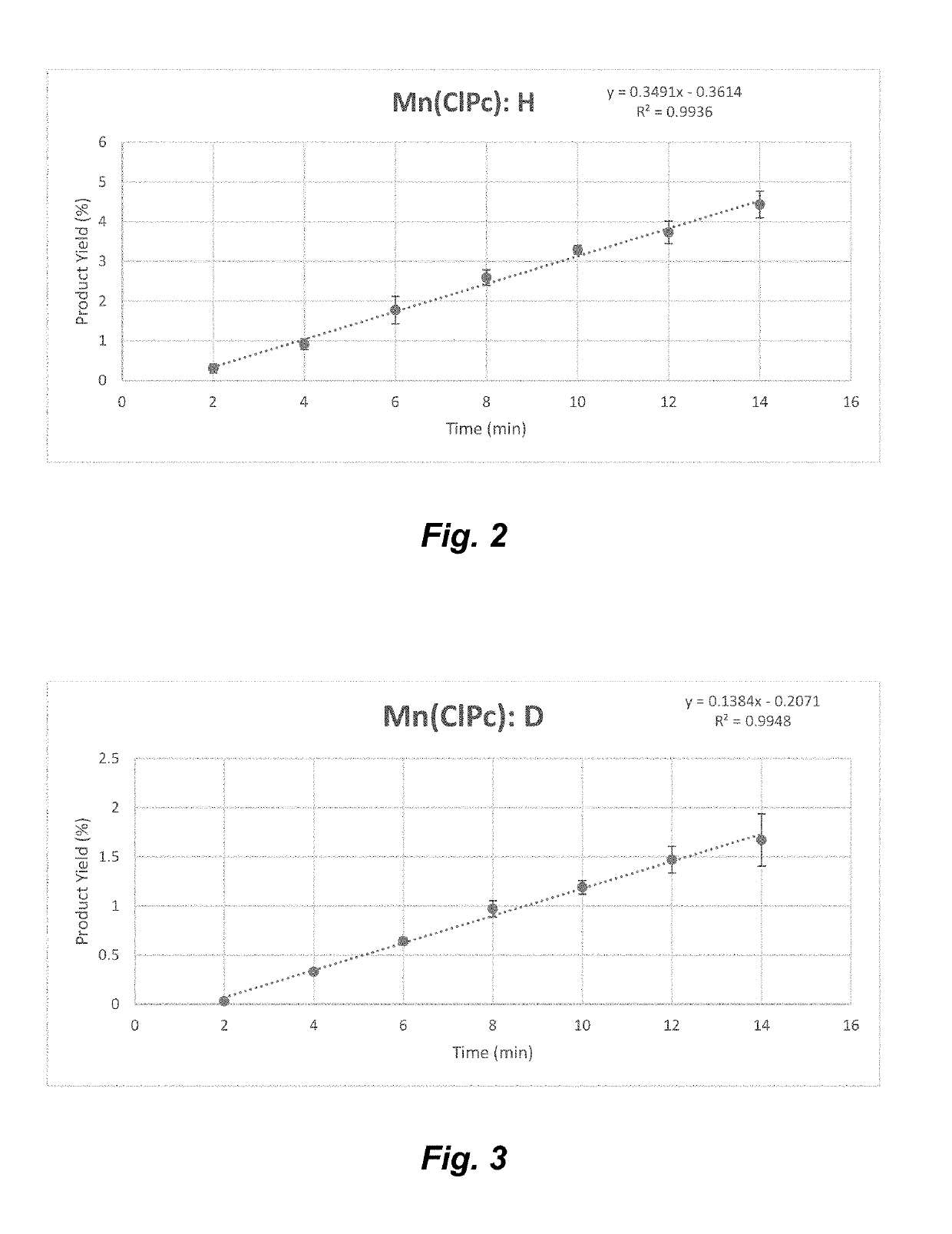Manganese (III) catalyzed c--h aminations
a technology of c-h amination and manganese, which is applied in the preparation of sulfuric acid amide, physical/chemical process catalysts, and organic compounds/hydrides/coordination complexes. it can solve the problem of limited direct installation of nitrogen into topologically and functionally complex molecules, the ability to effect remote c-h amination in molecules with basic amines or heterocyclic functionality has not been demonstrated, and the effect of reducing the number of amines
- Summary
- Abstract
- Description
- Claims
- Application Information
AI Technical Summary
Benefits of technology
Problems solved by technology
Method used
Image
Examples
example 1
ethods
[0104]General Information
[0105]The following commercially obtained reagents were used as received: Mn(II)Cl2 (99.995%-Mn, Strem), tetrachlorophthalonitrile (≥96%, TCI), PhI(OAc)2 (Sigma-Aldrich or Oakwood Chemicals), Mn(OAc)2 (Sigma-Aldrich) and powdered 3 Å and 5 Å molecular sieves (Sigma-Aldrich). 2,2,2-trichloroethyl sulfamate was synthesized according to a previously reported procedure (J. Am. Chem. Soc. 2007, 129, 562) and is also commercially available (Sigma-Aldrich). Anhydrous solvents were purified by passage through a bed of activated alumina immediately prior to use (Glass Countour, Laguna Beach, Calif.). Chloroform-d was stored over 3 Å molecular sieves. Thin-layer chromatography (TLC) was conducted with E. Merck silica gel 60 F254 pre-coated plates (0.25 mm) and visualized with UV and Cerium-ammonium-molybdate and potassium permanganate stains. Flash chromatography was performed using American International ZEOprep 60 ECO silica gel (230-400 mesh).
[0106]1H-NMR spe...
example 2
and Iminoiodinane Synthesis
[0111]
Manganese (III) Perchloro-Phthalocyanine Chloride [3]
[0112]In a 200 mL flame-dried round bottom flask under argon containing a Teflon stir bar and equipped with a water cooled condenser was added consecutively tetrachlorophthalonitrile (3.99 g, 15.00 mmol, 4 equiv), anhydrous Manganese (II) Chloride (472 mg, 3.75 mmol, 1 equiv), freshly distilled 1-Hexanol (45 mL, 0.33M) and 1,8-diazabicyclo[5.4.0]undec-7-ene (2.243 mL, 15.00 mmol, 4 equiv). The flask was placed in a 160° C. silicon oil bath and stirred for 8 h. Upon reaction completion, the flask was removed from the oil bath, allowed to cool to room temperature and cooled for 10 minutes in an ice bath. The contents were poured directly onto a glass fritted Buchner funnel and the solid washed consecutively and three times each with 5% HCl (aq) (3×20 mL), water (3×20 mL), and ethanol (3×40 mL). During the washes, the solid was broken up with a spatula to give a powdered turquoise solid after the last...
example 3
mination Procedures and Optimization Data for Table 1
General Procedure a for Reaction Optimization Studies (In Situ Formation of Iminoiodinane, Entries 1-4, 15)
[0127]In a 10 mL round bottom flask was added 5 Å powdered molecular sieves (40 mg) and a Teflon stir bar. The flask was sealed with a Suba Seal rubber septum, placed under vacuum, flame-dried for 45 seconds to activate the molecular sieves, cooled under argon and wrapped in foil to exclude light. Once cooled, solvent (0.40 mL, 0.5 M to substrate), commercial 3-phenylpropyl acetate 1 (35.6 mg, 0.20 mmol, 1 equiv), and 2,2,2-trichloroethyl sulfamate (54.8 mg, 0.24 mmol, 1.2 equiv) were added and stirred for 10 minutes. Catalyst (0.020 mmol, 0.1 equiv) and silver hexafluoroantimonate (6.9 mg, 0.020 mmol, 0.1 equiv) were weighed in a foil wrapped 1 dram vial in the glove box and sealed with a Teflon cap. The vial was removed from the glove box and the contents added directly to the round bottom flask while maintaining an argon a...
PUM
| Property | Measurement | Unit |
|---|---|---|
| temperature | aaaaa | aaaaa |
| temperature | aaaaa | aaaaa |
| temperature | aaaaa | aaaaa |
Abstract
Description
Claims
Application Information
 Login to View More
Login to View More - R&D
- Intellectual Property
- Life Sciences
- Materials
- Tech Scout
- Unparalleled Data Quality
- Higher Quality Content
- 60% Fewer Hallucinations
Browse by: Latest US Patents, China's latest patents, Technical Efficacy Thesaurus, Application Domain, Technology Topic, Popular Technical Reports.
© 2025 PatSnap. All rights reserved.Legal|Privacy policy|Modern Slavery Act Transparency Statement|Sitemap|About US| Contact US: help@patsnap.com



